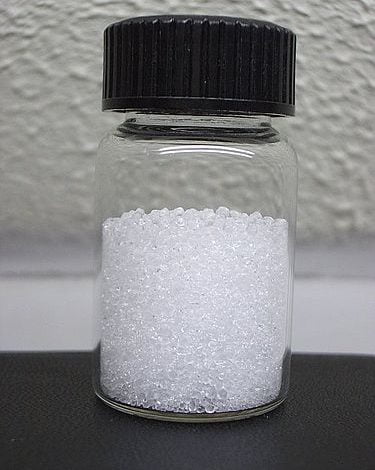Potassium alum

Potassium alum, potash alum, or potassium aluminium sulfate is a chemical compound: the double sulfate of potassium and aluminium, with chemical formula KAl(SO4)2. It is commonly encountered as the dodecahydrate, KAl(SO4)2·12H2O. It crystallizes in an octahedral structure in neutral solution and cubic structure in an alkali solution with space group P a -3 and lattice parameter of 12.18 Å.[4] The compound is the most important member of the generic class of compounds called alums, and is often called simply alum.[5]
Potassium alum is commonly used in water purification, leather tanning, dyeing,[6] fireproof textiles, and baking powder as E number E522. It also has cosmetic uses as a deodorant, as an aftershave treatment and as a styptic for minor bleeding from shaving.[7][8]
Potassium alum was known to the Ancient Egyptians, who obtained it from evaporites in the Western desert and reportedly used it as early as 1500 BCE to reduce the visible cloudiness (turbidity) in the water.[citation needed]
Potassium alum was described under the name alumen or salsugoterrae by Pliny,[9] and it is clearly the same as the stupteria described by Dioscorides.[10] However, the name alum and other names applied to this substance — like misy, sory, chalcanthum, and atramentum sutorium — were often applied to other products with vaguely similar properties or uses, such as iron sulfate or “green vitriol”.[11]
The production of potassium alum from alunite is archaeologically attested on the island Lesbos.[12] This site was abandoned in the 7th century but dates back at least to the 2nd century CE.
Potassium alum is mentioned in some[which?] Ayurvedic texts with the name such as sphaṭika kṣāra, phitkari or saurashtri.[citation needed] It is used in traditional Chinese medicine with the name mingfan (明矾).
